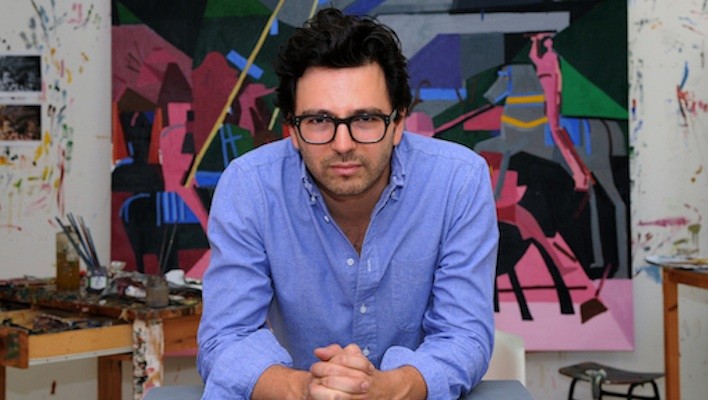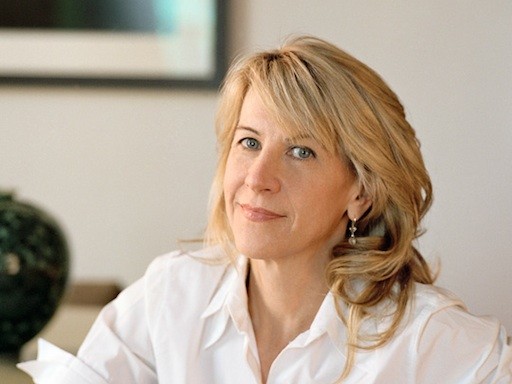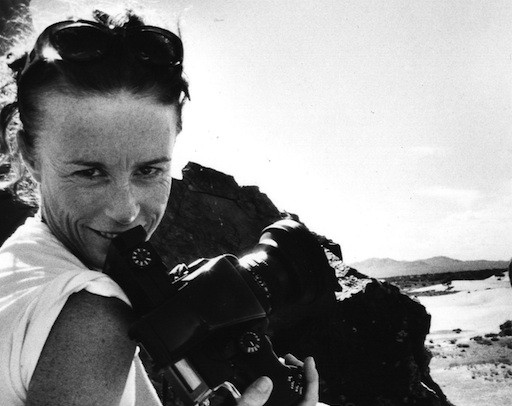Tel Aviv-based painter Guy Yanai creates bold, dynamic paintings that suffuse his experience of the quotidien world with a graphic intensity, even drama. Addressing the material trappings of contemporary life, his paintings have depicted subjects such as the interior of the artist's therapist's office and a range of consumer goods. Synthesizing a wide range of influences, from Renaissance humanism and classical antiquity to modernist abstraction and the Internet, Yanai's work captures the sense of simultaneous anxiety and excitement characteristic of today. We spoke with the artist about his process, his influences, and his impression of the Israeli art scene.
Your work often makes reference to all aspects of the Western canon, from ancient Greek amphora in paintings like Terracotta to Renaissance masters like Piero della Francesca to icons of modernist design. What draws you to these diverse works? Do you see an inherent connection between Eames chairs and Renaissance portraits?
Yes, absolutely. I see a connection between anything that is profound, and if something has survived for so long, there is usually a good reason. Basically I’ve resigned myself to a sort of "lineage" of Western civilization. It kind of puts things into an order that I can digest. The thread that binds them all together is my immediate emotional reaction to all of these works and "things." A Piero, an Eames chair, a Greek vase—they really seduce me, and the emotional experience in the first millisecond of contact with these is staggering.
You often portray intimate, personal spaces—your child's bedroom, your therapist's office—but through a very formalist language. These spaces are typically represented without any people in them, translated into a language of line, color, and abstract forms. Geometric abstraction is often thought of as impersonal, objective, yet you apply it to subjects associated with interiority and subjective response. Do you see a tension between the two?
There is an absolute tension there. Maybe even an irreconcilable tension. I mean, how can I reconcile some of these places, some of these rooms which I spend time in. I think with some hindsight now, I can say that a lot of the color and structure in the works is a sort of decoy, a way to get you in, and once you really enter the work it takes on a different meaning. Somehow simplifying and editing things down to the most basic makes it much more intimate and personal; it doesn't really make sense, but maybe it does in a visual sense.
The painting of the therapist's clinic [Therapy] was the hardest painting I've ever done. To try to figure this out almost killed me. A curator that I've been working with a lot recently proposed that we start on working a museum show of portraits. Just her bringing that up almost caused an anxiety attack. Some things I feel that if I were able to articulate clearly then they would become foolish. So yes, for some reason there are no people in most of these spaces.
In series such as Objects/Homages, you paint portrait-like close-ups of branded consumer goods, like a bottle of Veuve Cliquot champagne and an Adidas shoe. Do you intend these to be a critique of consumerism, or a portrait of your own life seen through the commodities you purchase?
That project was done about five years ago. Before that I was working purely abstractly for many years. I wanted to paint "things" in the most honest and simple way I could. It wasn't intended at first to be a critique of the capitalist systems, or a critique about brands, but it just turned out that way. These were all things that were around me, and that I liked, in a really simple way. I had all of these things that I liked, and it kind of became endless, like a sort of index. Some objects were just small plants, paper coffee cups, but somehow the expensive objects really interested people. LVMH even contacted me regarding the Veuve Cliquot paintings. I got scared that they would sue me or something, so I never replied.
You live and work in Tel Aviv. What do you think about the Israeli art scene? How does it compare to other cities you've lived in? Is there anything unique about it that separates it from other places you've lived or experienced?
Tel Aviv is a great place. It’s compact, very free, and a little wild. Very human. The art scene here is very electrifying. There is a lot going on, sometimes too much. Living here is good, I think that people here really live a full life. It’s strange in the fact that it’s on some tectonic plate; it’s not really west, not quite east. Also irreconcilable. Above all, the texture of life here is something that hypnotizes me. Both the physical texture of the vegetation, the air, the Levant, and the cultural, intellectual texture. I’ve lived in a few other cities, but Tel Aviv is my home.
What are you working on now?
Right now I'm working on some works for the Art 13 fair in London that I’ll be doing with Alon Segev Gallery in February. The show that is on now at Kunsthalle Rothschild 69 will be travelling to Torino, to the Velan Center for Contemporary Art in April, so that’s exciting; I think Ill be adding some more work to the Torino venue. There is group show in Denmark in May, and I'm very excited about a solo show in late June in Boston, at La Montagne Gallery. I grew up in Boston, and I haven’t really shown there in a long time, so I want to do something really special. I think the new work will be about these sort of voids that I've been thinking of.
What made you want to become an artist?
It’s a demon really. It chose me, and encaged me; it wasn't really a choice, but some sort of demonic master ordering me. I think if there isn't an absolute necessity, that if there isn’t a maniacal sense of urgency to make work, then one shouldn't do it.
What was your first significant art experience?
There were many. I was lucky to go to an amazing high school for my junior and senior years. This place had unbelievable teachers. So I was introduced to John Cage, to Chris Burden, to some really deep stuff very early on. So many amazing artists came out of this little high school, it’s incredible. Maybe seeing Rauschenberg's Bed when I was 16 at MoMA. That was pretty incredible for me. Maybe working all night after reading a book I liked. It all got cemented between the age of 15 and 16. The hard work was really to maintain that in a conscious way.
How has your work changed over the course of your career?
My work has changed so much, really. It’s insane. Sometimes I would have this notion of doing shows as a "group show for one artist." Finding and choosing was very hard me, and I had a lot of time to really fail, to really try many approaches. I have this real jealousy of artists whose work is consistent for decades, I just don't know how they do it. The amount of choice we have is frightening to me.
Where do you look for inspiration?
Everywhere—really everywhere. The way a woman walks on the street, some colors in a window display, books, magazines, films, Tumblrs, art history, really everything. It’s really just trying to be a human being in the texture that surrounds us. Life is usually overwhelming for me, and I'm always sort of astonished by everything that is happening.
What do you hope other people get out of your art?
First and foremost, I would like for the viewer, in the first few seconds, to have an emotional reaction, to be moved in some way. After that, if they still want to look, then hopefully all of the other cognitive layers will step in and enrich the experience.
What's your favorite thing you've ever made?
After I finish work, like about a week or two later, I look at it, and it seems so strange, so foreign even. And I realize that I could never do it again. It’s a little scary. For something to leave the studio it really has to go through a lot. Favorite thing, I don't know, maybe I haven’t made it yet.
What is indispensable in your studio?
Nothing. Just a space. Music is fun and helps. Good coffee from the coffee shop.
What do you collect yourself?
If I could, I'd collect a lot more. I have some old Bronlyn Jones, Jonas Wood, some Jonas Wood & Mark Grotjahn collaborations. I trade a lot with other artists. It would great to have a big Tal R painting, or a Wilhelm Sasnal. Also, some ancient reliefs—that would be great in the house.
Is there any other art-historical period that you wish you could have lived through?
Absolutely not. This is the best possible time ever to be making art. And especially to be painting. I am in love with our age, really.
Who is your favorite living artist?
The two artists who never cease to amaze me are John Zorn, the composer, and Jean-Luc Godard. They are both so relentless.
Who is your favorite historical artist?
Piero della Francesca
What is your favorite place to see art?
The Internet; no I'm kidding, any exhibition that is really thought out, that is really specific to its venue, that’s my favorite place.
What artwork or art destination would you most like to see?
A few years ago I went to see the Vence Chapel by Matisse. I was alone there for a few days. Not sure what can ever beat that.
What book has had the biggest impact on your work, or life?
I read a lot. Maybe it helps me fall asleep. Michel Houellebecq's last two books really moved me. David Foster Wallace is good. Fernando Pessoa, Paul Celan. I read a lot of nonfiction history as well, a lot about the Second World War. Maybe Portnoy's Complaint. I'm not sure. It changes a lot, but Houellebecq's The Map and the Territory was my favorite fiction of 2012.
What artist or artists do you think should enjoy greater recognition?
There are so many super people making such great things, and the beauty about 2012-13 and so on, is that everyone is really able to put their work out there now. There is room for everybody, it’s definitely not a finite thing. I do have this faith that anyone who really works hard can get what they need.
If you could get any artist to do your portrait, who would you choose?
Luc Tuymans or Masaccio.
Meet the Artist
Painter Guy Yanai on Imbuing the Everyday With Drama (and Graphic Punch)



























